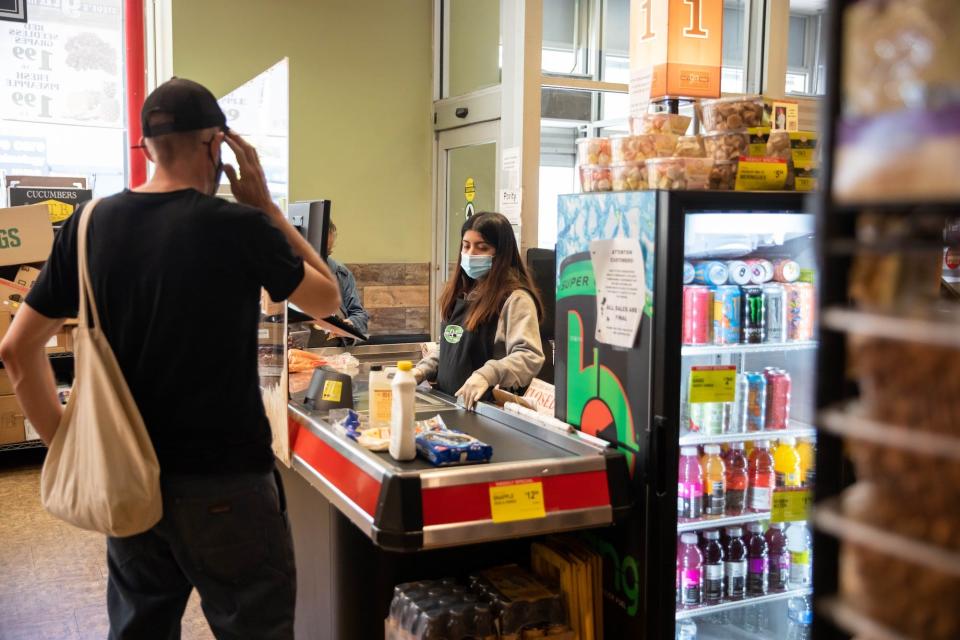Meet the typical ALICE: Americans struggling to afford basic necessities but making too much to get help

The number of Americans who are ALICE — Asset Limited, Income Constrained, Employed — is increasing.
The ALICE population is largely Gen Z, boomers, and single parents.
ALICE workers often are in retail, healthcare, and food services but struggle to afford necessities.
Some Americans increasingly find themselves in an economic paradox: They make too much money to qualify for help but still can't afford basic necessities. They're a group that's fallen into gaping holes in America's creaky safety net, and their ranks are growing.
Those Americans are known as ALICE — or Asset Limited, Income Constrained, Employed. The term, created by United Way's United For ALICE program, describes the Americans who may not qualify for services like food stamps or other benefits but still aren't making enough money to get by. They're above the poverty line but still in a tight economic position.
Part of that is due to a poverty line that's out of touch with how much Americans need to survive. Poverty rates have been falling across America, but the share of ALICE is on the rise in many states — and the share of Americans above the ALICE threshold is similarly falling. And Americans who are otherwise economically marginalized tend to fall into the ALICE bucket.
Each state has at least 32% of its population below the ALICE threshold, which includes both ALICE and those in poverty. This threshold is determined per county based on a household's average income needed to afford basic needs like housing, transportation, healthcare, and childcare.
The South has the highest concentration of states with about 50% of residents below the ALICE threshold. About 29% of the US population is ALICE, while 13% are below the poverty line.
So who is the typical ALICE? They're either the youngest or oldest workers in the workforce, often single parents, and full-time workers — but they're still not making ends meet.
ALICE Americans are the youngest and oldest in the workforce and more likely to be Black and Hispanic
The ALICE population is most pronounced for Gen Z aged 16 to 25 at 36% and boomers or older at 39%. The percentage of ALICE millennials and Gen Xers are both 24%.
Married adults with children tend not to be ALICE, as 80% reported being above the ALICE threshold. However, for single parents with children, the ALICE share jumps to 35% for moms and 36% for dads. About 27% of single Americans under 65 without kids are ALICE.
Though ALICE makes up over a quarter of all racial groups, the percentage is lowest for Asian Americans at 26% and white Americans at 28%. The percentage is highest for Black and Hispanic Americans both at 41%.
"There is a disproportionate impact on Black and Hispanic households, people with disability, younger and older households are more likely to be below the ALICE threshold, as are single-parent households with children versus married parent," Stephanie Hoopes, national director at United For ALICE, told BI.
ALICE Americans are all across the country and in both rural and urban areas
ALICE Americans exist everywhere from the isolated countryside of the US to the country's biggest cities. The breakdown between urban and rural ALICE is somewhat consistent — the ALICE population makes up 30% of the rural population and 28% of the urban population.
Nationwide, no state has more than 73% of its workforce making enough for their household survival budget. Just 52% of workers in Florida make enough to meet their needs, compared to 55% in California and 59% in New York and Texas. Many Midwest states have percentages close to or above 70%, led by Iowa.
ALICE Americans are working full-time in fields like retail and food service
Just 61% of all full-time workers earn enough to match their household survival budget, assuming one adult and one child. This statistic is highest for white workers at 69%, followed by Asian workers at 64%. However, only 43% of Hispanic workers make enough, compared to 46% of Black workers.
Nearly half of workers below the ALICE threshold are millennials, while 18% are Gen Z. Just over a quarter have a college degree, while 17% have less than a high school diploma.
Many workers below the ALICE threshold work in retail, healthcare, and food services. The average full-time hourly wage for these ALICE workers is $12.64 for retail, $15.99 for construction, and $11.09 for accommodation and food services, according to United For ALICE.
Still, just over half of ALICE workers put in full-time hours, and another 13% of ALICE who are not working are looking for work. That speaks to the conundrum the ALICE population faces: They are, for the most part, doing the things they're supposed to be doing to achieve financial stability. But, even so, they're flailing.
"Most of those jobs don't pay enough to cover the costs. So it's a mathematical equation and it's a structural problem. It's not that folks aren't trying hard," Hoopes said.
Are you an ALICE or working while still struggling to afford daily life? Contact these reporters at nsheidlower@insider.com and jkaplan@insider.com.
Read the original article on Business Insider
